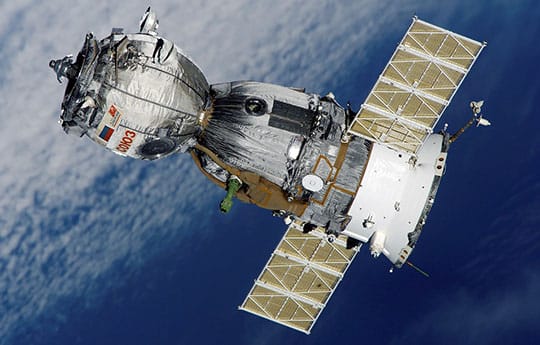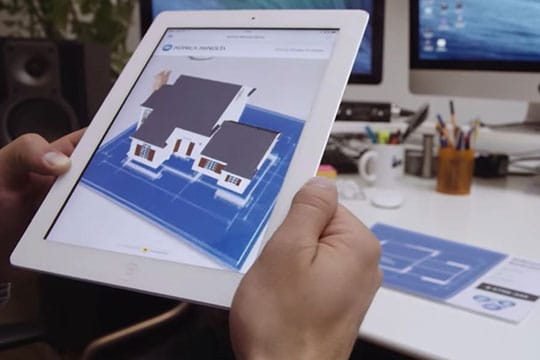At first glance, it may seem that innovation is synonymous with the word technology, but this is not entirely true. Tech innovations involve the development of new methods for solving existing old problems. Any changes that increase the efficiency of various actions and works, as well as the result of new ways of performing tasks, are innovations. It is a fairly broad concept, which means that innovations can also affect the non-tech environment, despite their connection with technology.
Modern technologies can solve many old problems in different industries. Innovative solutions can streamline workflows, help make data-driven decisions, make work easier for employees, and minimize human error. Technologies are transforming industries and businesses, raising them to a new level.
Agriculture

The rapidly growing demand for agricultural products cannot be met only at the expense of labor. In addition, modern agriculture has to adapt to climate change. This is where technology comes in handy because of advanced agriculture technology, many processes in agriculture can be automated and optimized. In this case, technology refers to everything that allows farmers to manage farmland more efficiently and increase yields. Agricultural innovations include various digital methods to help control growth and harvest, as well as monitor the development of livestock and provide more efficient care.
Automation of daily farm processes and increase in overall productivity is possible mostly thanks to new technology in agriculture. In addition, automation makes regular tasks less tedious for farmers, as technology applications do not require heavy physical work and significantly reduce the time for daily operations. Smart agriculture technology solves the problem of labor shortages on farms by filling the gaps in the lack of employees with robotic and autonomous equipment.
The problem of climate change is also quite acute for farmers today. However, modern agriculture technology makes it possible to reduce the impact of weather factors on agriculture, literally transferring it indoors. A greenhouse or vertical farm involves growing crops under controlled conditions, which reduces or eliminates the effect of weather on plants.
Livestock farming has also received many benefits from agro-technologies. For example, with the help of special sensors, farmers can monitor the condition of animals and detect health problems on time. It enables livestock farms to be managed more efficiently and animals to be adequately cared for.
Recommended for you: Top 15 Software Technology Trends of Today.
Satellite Imaging

Major players such as, for example, NASA help push new technologies to the market and promote the implementation of space technology into everyday life. Satellite imagery significantly increases the chances of farmers in the struggle for high yields. Satellite imagery allowed the birth of precision agriculture technology and made it possible to remotely monitor the state of crops throughout the area of agricultural land.
The Satellite images and their analysis make it possible to see what is impossible with the naked eye, ensuring the timely detection of problems and their solution. The use of remote sensing is crucial for large areas since scouting, in this case, can be very costly and time-consuming.
Digital Platform and App

We can say that today there are applications for anything, and agriculture is no exception. Applications, software, online resources, and other digital tools enable us to control and improve various spheres of our lives quickly and without spending a lot of time. They also help us to perform daily activities more efficiently while remaining flexible and mobile.
Today’s digital precision farming tools make it much easier for farmers, scouts, and other agricultural workers by providing accurate and valuable data. For example, EOS Data Analytics has developed an all-in-one platform for precision farming, Crop Monitoring. The platform provides farmers with efficient tools for seeding and growing crops, including reliable monitoring of plant health throughout the growing season. With the help of Crop Monitoring, farmers are empowered to make effective decisions based on weather, plant health, and soil moisture data.
This precision farming platform also empowers farmers to maximize resource efficiency by basing irrigation and fertilization decisions on plant needs. Accurate determination of areas affected by diseases or pests allows growers to eliminate the problem in time and do it pointwise, reducing the negative impact on the environment. This fact also helps to reduce the cost of buying fertilizers and other products.
You may like: How Solar Technology Can Drive the Future? Let’s Find Out!
Real Estate

The real estate sector is constantly growing and developing; therefore, the need to keep up with the times and introduce technologies is relevant. Innovative solutions are essential in this sector to meet the needs of people who are mainly looking for the safest, most comfortable, and cozy conditions in their choice of housing. For this reason, the real estate industry cannot do without technology since they help adapt to market conditions and satisfy the population’s demand.
Desktop appraisals provide an opportunity for home appraisers to explore using secondary data sources. Thus, you can access floor plans, preliminary estimates, and building permits. This information is essential for both appraisers and those who sell and buy housing. However, for appraisers, Desktop appraisals make the job much more accessible and save time because they don’t have to go to the site every time. Subsequently, this also affects the work of creditors and agents.
A smart home is equipped with various devices that can be controlled remotely. This concept adds comfort and security to your home, as you can, for example, check if the lights in your house are on when you are away, make sure no one is breaking into your home, or even alert the police remotely. It used to be a luxury to have a house like this, but technology is becoming more accessible, and the smart home has become more widespread.
The use of virtual and augmented reality technologies makes it possible to visit an object without a physical presence. You can do it remotely, wherever you are. Thus, people from any corner of the world can check the property they want to rent or buy without leaving their country. In addition, such visualization helps people to fully see what a specific place will look like when it is built and visit it virtually. It makes it possible to appreciate the potential of the object entirely.
Travel

Technology has a positive impact on the tourism industry. For example, automation and virtualization help employees complete tasks more efficiently. Technology makes everyday tasks easier and saves time by consolidating resources and eliminating the need for a physical presence.
Data management is crucial in the tourism industry, and technologies such as cloud systems help cope with this task at the highest level. Companies can move data between data centers and clouds to optimize cost and performance. The data is also assisted by artificial intelligence, thanks to which people employed in the travel business have improved capabilities for forecasting and customer service. This technology also helps to improve customer service and customer experience when interacting with the company.
Vehicles are an integral part of tourism, but today’s climate realities require humanity to reduce its environmental impact, and this is where clean technologies come into play. With clean technology, travel costs are dropping, making tourism more accessible and sustainable.
Hospitality

Hotel technology is critical for customer service improvement. Adaptation plays a vital role in maintaining and enhancing the competitiveness of hotels, as innovation improves the customer experience with the business. Hoteliers will also benefit from streamlining and automating processes, better marketing, cybersecurity, and resilience.
Cybersecurity is a crucial part of the hospitality business today as hotels receive a lot of sensitive data. Unfortunately, phishing, DDoS attacks, and various malware are side effects of technological development.
Hotel apps are more relevant than ever in today’s world, where there is an app for everything. Mobile apps make hotels more attractive by making it easier for customers to manage bookings, select rooms, make payments, communicate with staff, and check in. On the other hand, hotels can get customers’ attention with the help of push notifications and other tools.
Smart hotels, like smart homes, allow you to create comfortable and safe conditions and save money. For example, using motion sensors, you can adjust the power supply and thus reduce its use. With mobile and voice control, guests themselves can maintain their experience and personalize it. For example, innovative technology enables guests to choose the lighting and temperature in the venue. It’s also possible to add a bathroom start function or turn on music.
You may also like: 9 Stunning Ways Technology Can Transform Wholesale Distribution.
Conclusion

Technology is transforming many spheres of our lives and making it possible to do even the simplest things, like ordering groceries home or buying tickets, faster and more efficiently. Manufacturing and business also benefit from the application of technology.
First, this is an opportunity to optimize processes and facilitate the work of people for whom monotonous tasks that require concentration or physical activity, for example, can be exhausting if we are talking about agriculture. In addition, technological solutions often allow people to see what is not visible to the naked eye and detect problems well before the damage is done. And finally, technology contributes to the sustainability of various industries that negatively affect the environment.





